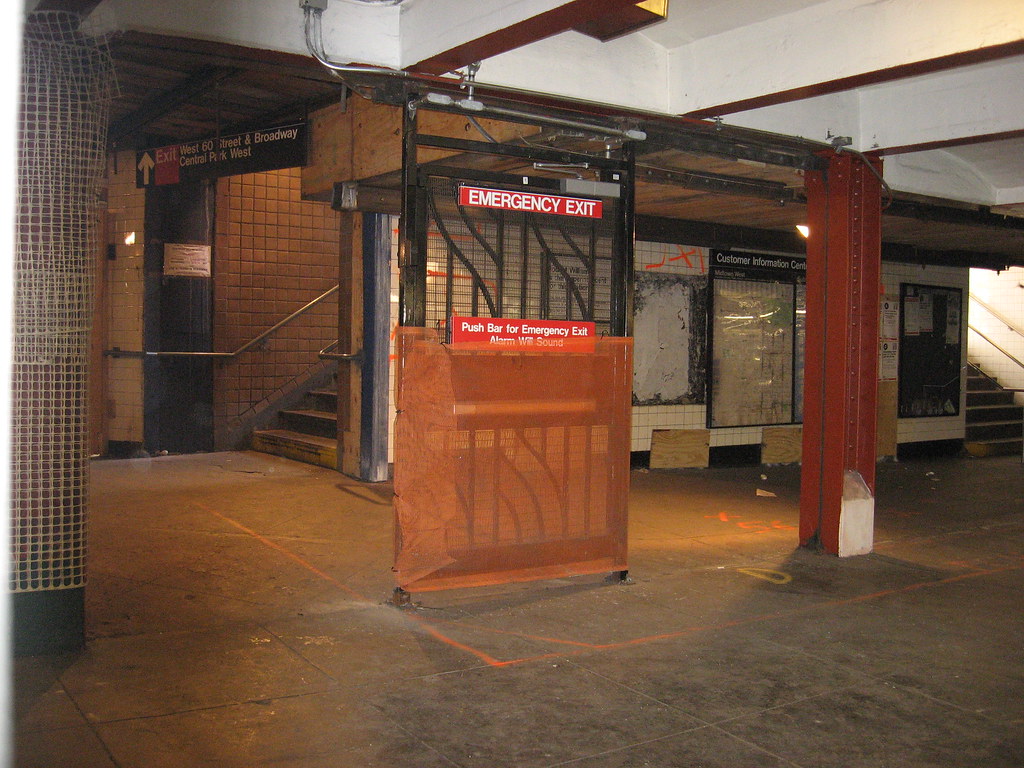A few weeks ago, the MTA unveiled its next five-year capital plan. They did so a few months earlier than usual with the idea that the public would have ample time to comment on the plans and offer some feedback. Already, politicians are angling for capital projects, and this lobbying raises some interesting transit-related questions.
Today’s story of politicos looking for money — what else do they do anyway? — comes to us from Queens. According to NY1 News, a few Queens politicians want the MTA to rehab the J/Z elevated structure:
Queens council member Elizabeth Crowley and Senator Joseph Addabo Junior called on the state Monday to approve the MTA’s four-year capital plan, which includes restoring and repainting the structure that runs above Jamaica Avenue in Woodhaven.
“This train station serves a major purpose for our people. It’s been deteriorating and it has been deteriorating since I was a kid. It’s important to get it fixed,” Addabo said.
“I firmly believe once this is repainted it will attract more businesses to Jamaica Avenue, mores shoppers and overall economic growth,” Crowley said.
Addabbo and Crowley say existing structures should get priority over new MTA projects.
It’s that last line that is key to Addabbo and Crowley’s little headline-grabbing press conference. Of course, the elevation Jamaica Ave. structure in Woodhaven needs some work. Which above-ground subway lines, after all, are in good condition? None that I can think of.
But that last statement makes me wonder about the MTA’s priorities and the ways in which city residents see those priorities. I live in Park Slope in Brooklyn. I take the Q on a regular basis, but when it heads past 57th St. and curls north to Second Ave., I won’t notice. I’ll still ride it just to Chinatown or Midtown. Meanwhile, the Q station I use — at 7th Ave. and Flatbush Ave. — is a mess. There aren’t enough seats. There aren’t enough garbage cans. The closed staircases to a now-neglected mezzanine are used as bathrooms by homeless wanderers.
When push comes to shove, the vast majority of New Yorkers won’t derive much of a benefit from the Second Ave. Subway, the 7 Line Extension or the East Side Access project. We will, however, see our stations deteriorate — or collapse — and we will see our system age.
As the MTA faces the reality of a capital plan that is facing a $10 billion budget gap, the agency may have to make some uncomfortable choices. It may have to choose between funding some projects and neglecting others. Should, as Addabbo and Crowley say, the MTA give priority to existing structures over new projects? That state of good repair looms large over our subways.
In the end, reality is far from this simple. It never is easy. The MTA has to invest money in its currently aging infrastructure, but it also has to keep an eye toward an expanding city that is maxing out the capacity of its subway system. The MTA has to build its mega-projects, and it has to keep asking for money for these mega-projects. We need a system in good repair, but we need a system that can adequately meet the demands of the city as well.


 At 5 a.m. today — a few hours from now or a few hours ago, depending upon when you visit SAS — the 1 train will roll north and finally pass through the tracks at 181st St. shuttered by a falling ceiling. While the train won’t stop there this morning and will bypass the station until further notice, for the thousands of riders who had to take shuttle buses and multiple subways to navigate this collapse, that journey is over for now.
At 5 a.m. today — a few hours from now or a few hours ago, depending upon when you visit SAS — the 1 train will roll north and finally pass through the tracks at 181st St. shuttered by a falling ceiling. While the train won’t stop there this morning and will bypass the station until further notice, for the thousands of riders who had to take shuttle buses and multiple subways to navigate this collapse, that journey is over for now.












